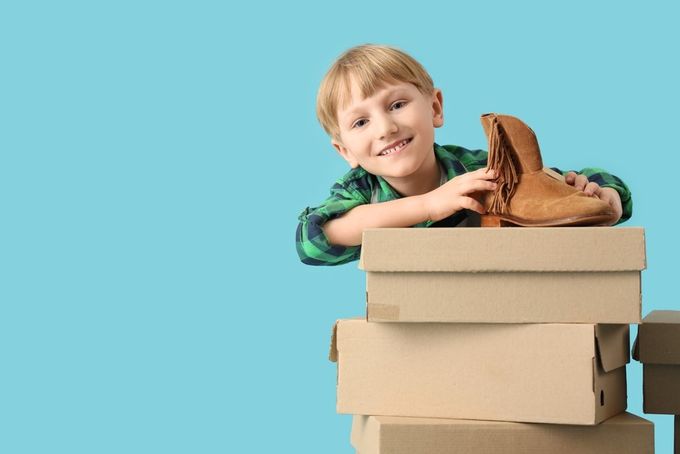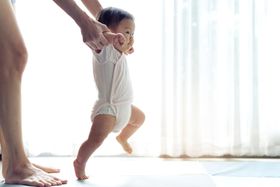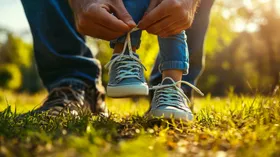How to Store Off-Season Shoes: Best Practices to Adopt
Tired of replacing shoes constantly? Discover the secrets to prolonging the life of your kid's footwear through proper storage
Published August 11, 2024

It’s no secret that kids can be harsh on their shoes. From playground scrapes to muddy footprints, their footwear experiences constant wear and tear. But the damage doesn't always stop when the fun ends. How you store your child's shoes can surprisingly impact their longevity.
» Discover our durable, seasonless shoes that are also perfect for storage
Why Proper Shoe Storage Matters
Kids' feet grow astonishingly, with some outgrowing their shoes every 3–6 months! This rapid growth means that families often constantly rotate shoes in various sizes, both in use and storage.
Failing to store these off-season shoes properly can lead to a range of issues, including:
- Deformation: Poorly stored shoes can become misshapen, compromising the fit and support they provide when it's time to wear them again.
- Mould and Mildew: Damp or humid storage conditions can encourage the growth of mould and mildew, which can cause damage and pose health risks.
- Premature Wear: Improper storage techniques, such as stacking heavy objects on top of shoes, can cause the materials to deteriorate faster.
- Lost Accessories: Small parts like laces, buckles, and Velcro straps can easily disappear if shoes are not stored with care.
- Disorganisation: Haphazard storage can make it challenging to locate the correct size shoe when needed, leading to frustration and wasted time.
» Find out how often to replace your child's shoes
How to Properly Store Kids' Shoes
Correct storage begins with a thorough cleaning and organisation process. Here's a step-by-step guide to help you get started:
- Clean and Condition: Wipe the exterior with a damp cloth to remove dirt or debris. Apply a small amount of leather conditioner or polish for leather shoes, following the manufacturer's instructions. Then, let the shoes air dry completely.
- Stuff and Shape: Put acid-free tissue paper or clean, crumpled-up packing paper in the toe boxes to help retain the shoe shape and prevent creasing or deformation.
- Pair and Label: Group shoes by size and pair them together by lacing them or using rubber bands. Label each pair with the size, type of shoe (e.g., sneakers or boots), and the date they were last worn.
- Contain and Protect: Place the paired and labelled shoes in breathable containers, such as cardboard boxes, canvas bags, or fabric storage bins. Avoid plastic bags or airtight containers, as they trap moisture and lead to mould and mildew growth.
- Control the Environment: Store the containers in a cool, dry, dark place, like a closet or under a bed. Avoid damp areas like basements or attics and those with large temperature fluctuations. Consider using desiccant packs or silica gel sachets to absorb moisture.
- Rotate and Check: Set a regular schedule to rotate your children's shoes, swapping out off-season footwear as needed. Periodically inspect the stored shoes for damage, mould, or deterioration.
- Avoid Stacking: Placing heavy objects on top of shoe containers can cause the shoes to become misshapen. If stacking is needed, ensure the heaviest containers are on the bottom and distribute the weight evenly.
» Stop squeezing and discover shoes that accommodate wide feet
Durable Kicks for Little Feet
By following these guidelines, you can significantly extend the life of your kid's footwear. Proper care preserves its condition and maximises its value, whether you plan to reuse, pass down, or resell it.
With a little effort, you can ensure that these beloved items remain in top shape for years.
» Looking for seasonless and storage-friendly shoes? Explore our collection
Related Articles

10 Best Kids' Shoes for Tippy-Toe Walkers: Walk With Ease
Ruchita Dhavade
December 3, 2024

How Often do you Need to Replace your Child Shoes?
First Walkers
June 10, 2025

Clarks Kids' Shoes Alternatives: Top 3 Stylish and Durable Options
Jasrah Javed
March 27, 2025

Autism and Walking on Tippy Toes: Exploring the Connection
Jasrah Javed
December 5, 2024

10 Best Snow Boots for Kids: Keep Little Feet Warm
First Walkers
October 11, 2025
